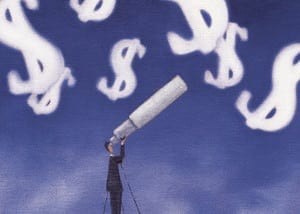 B2B digital marketing spending will increase 7.6% to almost $77 billion in 2015, according to Outsell’s 2015 Advertising and Marketing Study.
B2B digital marketing spending will increase 7.6% to almost $77 billion in 2015, according to Outsell’s 2015 Advertising and Marketing Study.
In some categories, growth rates will be twice that according to the survey, fielded in January.
Website spending remains the largest category with $29.1 billion in spending, according to Outsell’s report. Ad spending on social networking sites will grow more than 15% year over year, but spending on companies’ own social engagement exceeds social ad spend by $1.1 billion. Email continues to maintain an impressive 11% share of B2B marketers budgets, but its growth has dropped 1.8%.
Year over year, the categories with the highest spending increases for B2B digital will be webinars (up 10.4%), sponsored content (+7.4%), ads on social networks (+7.2%) and mobile (+6.2%).
Print spending is expected to stabilize this year, reversing a multiyear decline. Custom print spend will grow almost four percent to $10 billion, as publishers focus on increasing their marketing services capacity.
Event and conference spending will increase by 8% in 2015, spurred by a need for professional training.
Breaking down spending by vertical markets shows that manufacturing, technology vendors, biotech/chemicals/pharma and professional services cite their own websites as the top ROI method of marketing, while financial services cited conferences.
The top marketing problem area varied by vertical market—manufacturing said applying analytics, while tech and professional services said evaluating ROI, biotech/chemicals/pharma said marketing analytics skills and financial said vendors were not solutions oriented.
B2B marketers will spend $72.4 billion on direct-to-consumer marketing, bypassing established media companies. That represents more than 47% of total B2B advertising and marketing spending and has risen dramatically since 2010, when B2B direct-to-consumer spending was only $53.3 billion.
Data for the study was collected via survey in January, and combined with 10 years of trending data. Of the total 1,487 US respondents, 719 were B2B-focused marketers, while 768 were consumer-focused.
 Network
Network

